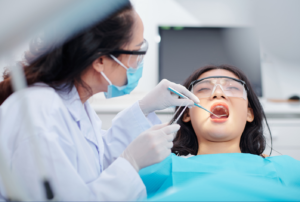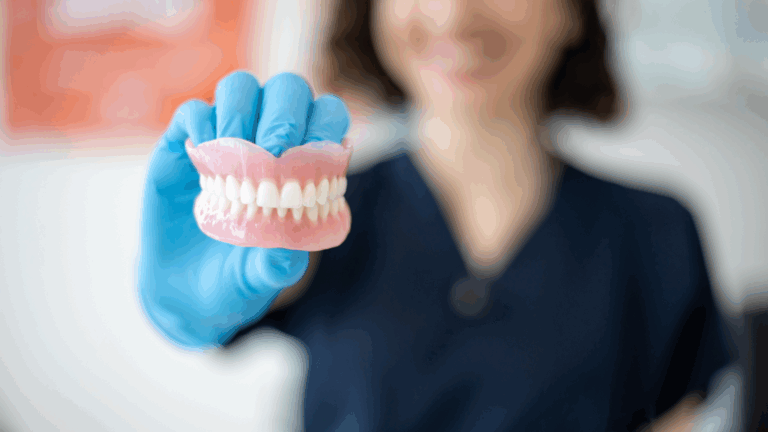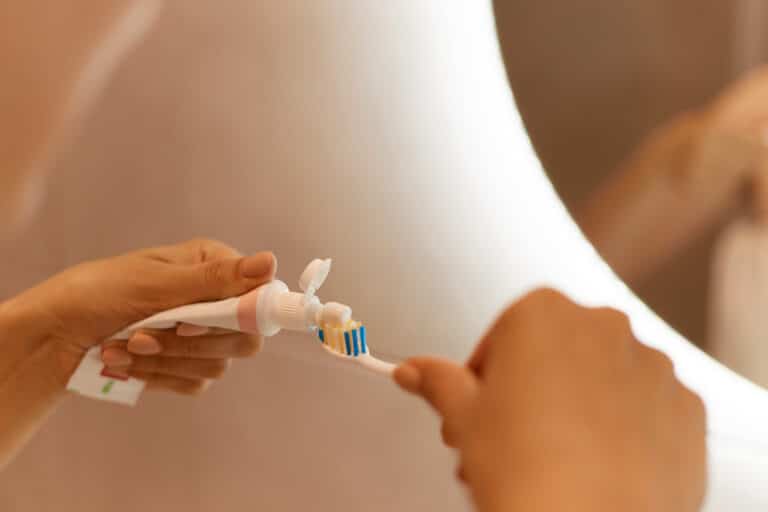Welcome to our WeSmile Dental’s guide, today, we delve into the intriguing world of sinus lifts. If you’re wondering what a dental sinus lift is, you’re not alone. It’s a procedure that might sound complex, but we’re here to break it down for you in simple terms.
What is a dental sinus lift?
A dental sinus lift, also known as sinus augmentation, is a surgical procedure that involves adding bone to the upper jaw in the area of the molars and premolars. The bone in this area may naturally be insufficient due to the proximity of the sinus. This lack of bone can pose a challenge for dental implants, making a sinus lift an essential step for successful implantation.
What are the types of sinus lifts?
When it comes to preparing for dental implants in the upper jaw, understanding the types of sinus lifts is key. Let’s dive into the two main techniques:
 Internal sinus lift
Internal sinus lift
The Internal Sinus Lift, also known as the lateral window technique, is a method performed from within the mouth. Here’s an overview:
- Incision: A small incision is made inside the mouth to access the sinus wall.
- Bone graft placement: The oral surgeon gently lifts the sinus membrane, creating a space for the bone graft.
- Closure: Once the graft is in place, the incision is closed, and the healing process begins.
This technique is suitable for individuals with sufficient bone height and a smaller sinus cavity.
External sinus lift
The External Sinus Lift, or the osteotome technique, is performed externally, outside the mouth. Here’s what you need to know:
- Incision: An incision is made in the gum tissue to expose the jawbone.
- Osteotome placement: Special instruments called osteotomes are used to lift the sinus floor and insert the bone graft.
- Closure: After graft placement, the incision is closed, initiating the healing period.
This technique is often preferred when there is limited bone height and a larger sinus cavity.
How do I know if I need a sinus lift?
Curious about whether a sinus lift is in your future? There are a few signs that might indicate the need for this procedure:
- Significant bone loss has occurred in the intended area for the dental implant.
- The maxillary sinuses have undergone pneumatization, a natural process leading to an expansion of the maxillary sinus volume.
- Loss of posterior teeth in the upper jaw occurred quite some time ago.
During your consultation with our experienced dentists, we’ll assess your dental history, perform X-rays, and discuss your treatment goals. This comprehensive evaluation helps us determine whether a sinus lift is the right solution for you.
What is a sinus lift procedure like?
 The sinus lift procedure is a surgical technique performed by oral surgeons to augment the bone in the upper jaw, specifically in the area of the molars and premolars. This procedure is essential for individuals planning to undergo dental implantation in the upper jaw, where insufficient bone may exist due to the proximity of the sinus.
The sinus lift procedure is a surgical technique performed by oral surgeons to augment the bone in the upper jaw, specifically in the area of the molars and premolars. This procedure is essential for individuals planning to undergo dental implantation in the upper jaw, where insufficient bone may exist due to the proximity of the sinus.
Here’s an overview of what the sinus lift procedure typically involves:
Anaesthesia:
The first step is ensuring your comfort throughout the surgery. You will be administered either local or general anaesthesia, depending on your specific case and preferences.
Incision:
Once the anaesthesia takes effect, the oral surgeon makes a small incision in the gum tissue above the premolars and molars, exposing the jawbone.
Accessing the sinus cavity:
After the incision, the surgeon carefully accesses the sinus cavity. This involves gently lifting the membrane lining the sinus to create a space for the bone graft.
Bone graft placement:
The next step is the placement of the bone graft material. This graft can be sourced from your own body (autograft), a donor (allograft), or synthetic materials. The choice of graft depends on factors such as the extent of bone loss and your overall health.
Closing the incision:
Once the bone graft is securely in place, the surgeon closes the incision with stitches. This marks the completion of the surgical phase.
Post-operative care:
Following the procedure, a crucial aspect of the process is post-operative care. The oral surgeon will provide you with detailed instructions on how to care for the surgical site, manage any discomfort, and avoid activities that could compromise the healing process.
Healing and integration:
Over the next several months, the bone graft integrates with your existing bone, creating a stronger foundation for future dental implant placement. During this healing period, it’s essential to attend follow-up appointments to monitor progress and address any concerns.
 Dental implant placement:
Dental implant placement:
Once the healing process is complete, and the bone is adequately augmented, you may proceed with dental implant placement. This additional step is what makes the sinus lift a crucial precursor to successful implantation in the upper jaw.
While the sinus lift procedure may sound intricate, it is a well-established and routine surgery conducted by experienced oral surgeons. The goal is to ensure that you have a solid and supportive foundation for the long-term success of your dental implants.
Is a sinus lift procedure painful?
Both types of sinus lift procedures are pain-free, as they are conducted under local anaesthesia. Following an External Sinus Lift, individuals may experience slight discomfort for a period of 1 to 2 days.
What are the types of sinus lift techniques?
Sinus lift techniques have evolved over the years, and advancements in dental science have given rise to different approaches. Two main techniques are commonly used:
- Lateral window technique: This traditional method involves creating a small window in the lateral wall of the sinus to access and lift the membrane.
- Osteotome technique: This minimally invasive technique involves using special instruments called osteotomes to elevate the sinus floor and insert the bone graft.
The choice of technique depends on factors such as the patient’s anatomy, the amount of bone needed, and the surgeon’s preference. During your consultation, our experienced team will discuss the most suitable technique for your specific case.
Entering the world of sinus lifts with confidence
A sinus lift might be the missing piece in achieving your dream smile with dental implants. If you’re considering this procedure or have more questions, feel free to book a consultation with our experienced dentists. We’re here to guide you through every step of the process, ensuring a confident and informed decision about your oral health.
FAQs
Are there any side effects from a sinus lift?
It’s natural to be curious about potential side effects, and we’re here to address your concerns openly. While a sinus lift is generally a safe and well-tolerated procedure, like any surgery, it may come with some side effects.
- Swelling and discomfort: It’s common to experience some swelling and discomfort in the days following the surgery. This can be managed with prescribed medications and proper post-operative care.
- Bleeding: Mild bleeding at the surgical site is normal, but it’s usually temporary and easily controlled.
- Infection risk: Though rare, there is a minimal risk of infection. We take stringent measures to minimise this risk, including the use of sterile techniques and post-operative antibiotics.
- Sinus issues: As the name suggests, a sinus lift involves working in close proximity to the sinus cavity. While complications are rare, there is a slight risk of sinus-related issues, such as a sinus infection. Rest assured, our experienced team takes every precaution to mitigate such risks.
It’s crucial to follow post-operative instructions diligently to ensure a smooth recovery and minimise the likelihood of complications. Our team will provide you with detailed guidance on caring for yourself after the procedure.
What does post-operative care of a sinus lift look like?
After undergoing a sinus lift, the post-operative care plays a pivotal role in ensuring a smooth recovery. Here’s a detailed overview of what to expect and how to care for yourself during the crucial healing period:
Rest and recovery
- Immediate rest: Take the time to rest immediately after the procedure, avoiding strenuous activities for a few days.
- Ice packs: Apply ice packs to the cheek area intermittently for the first 24 hours to reduce swelling, following the surgeon’s recommendations.
Medication management
- Prescribed medications: Take any prescribed antibiotics and pain medications as directed by your oral surgeon to prevent infection and manage discomfort.
- Avoid aspirin: Refrain from aspirin or aspirin-containing medications, as they can increase the risk of bleeding.
Oral hygiene practices
- Gentle oral care: Maintain good oral hygiene with a soft-bristled toothbrush, being gentle around the surgical site.
- Prescribed mouthwash: Use any prescribed antimicrobial mouthwash to reduce the risk of infection.
Dietary guidelines
- Soft diet: Stick to a soft diet for the initial days, including foods like mashed potatoes, yogurt, and smoothies.
- Hydration: Drink plenty of water to stay hydrated, avoiding the use of straws initially to prevent disruption to the surgical site.
Activity restrictions
- No smoking: If you smoke, abstain from smoking for the specified period to support the healing process.
- Gentle nose care: Be cautious when blowing your nose to avoid excessive pressure on the sinus area.
Follow-up appointments
- Scheduled check-ups: Attend all scheduled follow-up appointments with your oral surgeon to monitor healing progress and address concerns promptly.
Warning signs
- Contact your surgeon: Reach out to your oral surgeon if you experience excessive bleeding, severe pain, or signs of infection like persistent swelling, redness, or fever.
Gradual resumption of activities
- Resume normal activities: Gradually resume normal activities as advised by your oral surgeon, avoiding intense physical activities until given the green light.
Patience and self-care
- Healing time: Understand that healing takes time. Follow post-operative care instructions diligently and be patient during the recovery process.
Open communication
- Contact your surgeon: If you have questions or concerns during the recovery period, don’t hesitate to reach out to your oral surgeon.
Remember, individual recovery experiences may vary, so it’s crucial to follow the specific post-operative care instructions provided by your oral surgeon for the best results.
Are there age restrictions or limitations for sinus lift?
One common question that arises when considering a sinus lift is whether there are age restrictions or limitations. The good news is that there is no strict age limit for a sinus lift procedure. The eligibility for a sinus lift is determined more by the individual’s overall health and specific oral health needs rather than age alone.
Factors considered for candidacy include:
- Overall health: An individual’s general health is a critical factor. As long as a person is in good health and able to undergo surgery, age is not a strict limiting factor.
- Bone density: The primary purpose of a sinus lift is to augment bone in the upper jaw, making it suitable for dental implants. The assessment of bone density is a key consideration, regardless of age.
- Dental implant plans: If a person is planning to receive dental implants in the upper jaw and lacks sufficient bone due to natural reasons or bone loss, a sinus lift may be recommended.
The decision to undergo a sinus lift is made on an individual basis, taking into account the specific needs and circumstances of each patient. It’s essential to consult with an experienced oral surgeon who can assess your oral health and provide personalised recommendations.
Can a sinus lift be performed simultaneously with dental implant placement?
Yes, a sinus lift can be performed simultaneously with dental implant placement in certain cases. This approach, known as a simultaneous or one-stage procedure, is often considered when the sinus lift is needed to create sufficient bone for the dental implant.
Key points about simultaneous sinus lift and dental implant placement:
- Efficiency: Combining the procedures can streamline the overall treatment process, reducing the number of surgical sessions required.
- Bone graft integration: The bone graft placed during the sinus lift integrates with the existing bone over time, providing a stable foundation for the dental implant.
- Individual assessment: The feasibility of a simultaneous procedure depends on factors such as the extent of bone loss, the need for a significant sinus lift, and the overall health of the patient.
- Advanced techniques: Advances in dental implantology and surgical techniques have made simultaneous procedures more common and successful.
While a simultaneous procedure can offer advantages, it’s essential to note that not all cases are suitable for this approach. The decision is made based on a thorough assessment of the patient’s oral health and treatment goals. Consultation with an experienced oral surgeon will help determine the most appropriate approach for your specific case.


